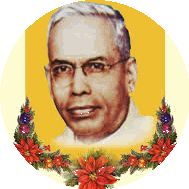BLIS-102: Information Sources and Services
-
Unit 1: Information Sources: Meaning, Nature, Characteristics and Types
-
Unit 1: Primary Sources of Information
-
Unit 1: Secondary Sources of Information
-
Unit 1: Tertiary Sources of Information
-
Unit 2: Non-Documentary Sources
-
Unit 3: Electronic Information Sources
-
Unit 3: Electronic Information Sources: E-Journals, E-Books, Databases, and ETDs
-
Unit 3: Internet Information Resources
-
Unit 3: Directory of Open Access Journals (DOAJ)
-
Unit 3: E-Books
-
Unit 3: Open Access Resources (OARs): Meaning, Evolution, Models, Advantages, Limitations and Role of Libraries and Library Professionals
-
Unit 3: Open Educational Resources (OERs): Meaning, Evolution and Growth, Advantages, Limitations and Role of Libraries and Library Professionals
-
Unit 3: Subject Gateways: Meaning, Advantages, Limitations and Examples
-
Unit 3: Bibliography: Indian National Bibliography (INB) and British National Bibliography (BNB)
-
Unit 3: E-ShodhSindhu and Shodhganga
-
Unit 3: LISTSERV: Meaning, Components, Types, Growth and Development, Advantages, Limitations and Application
-
Unit 4: Reference Services & Referral Services: Concept and Functions
-
Unit 4: Documentation Services: Current Awareness Service (CAS) and Selective Dissemination of Information (SDI)
-
Unit 4: Indexing Services: Meaning, Characteristics, Objectives and Importance
-
Unit 4: Abstracting Services: Meaning, Features, Objectives and Importance
-
Unit 4: Translation Services: Meaning, Advantages, Processes & Methods, Role of Translation Services in Libraries
-
Unit 4: Academic Social Networks: Meaning, Characteristics, Importance and Role in Libraries, Advantages, Real-World Examples of Academic Social Networks
-
Unit 4: Invisible College: Meaning, Characteristics, Importance & Role
-
Unit 4: Institutional Repository: Introduction, Meaning and Definition, Characteristics, Limitations and Challenges, Role of Libraries
BLIS-201: Information and Communication
-
Unit 1: Information: Concept, Characteristics, and Nature
-
Unit 1: Conceptual difference between Data, Information and Knowledge
-
Unit 1: Modes of Information Generation: Observation, Thought Process, Experimentation, Processing of Data, Event, Evolution, & Dream
-
Unit 1: Forms of Information: Oral, Pictorial Printed & Digitized
-
Unit 2: Communication: Concepts, Nature, Importance, Purpose and Enhancing Communication Effectiveness (The 7 Cs)
-
Unit 2: Communication types: Verbal, Nonverbal, Written, Visual, Interpersonal, Intrapersonal, Group, Mass, Formal and Informal Communication
-
Unit 2: Communication Process: Element, Cycle and difference between Communication Cycle & Process
-
Unit 2: Communication Models: Shannon and Weaver's, Lasswell's, Gerbner's and Wilbur Schramm's
-
Unit 3: Communication Channels in Information Centers: Oral, Written and Visual
-
Unit 3: Communication Barriers: Challenges and Overcoming in Library and Information Centres
-
Unit 3: Trends in Scientific Communication and Role of Scholarly Communication in Research
-
Unit 3: Changing role of Library and Information Centres in Information Society
-
Unit 4: Information Society: Concept, Definition, Perceptions, Role of Libraries and Future
-
Unit 4: Dynamics of change in Societies: Societal Change, Rapidity of Change & Agent of Change
-
Unit 4: Impact of Information and Knowledge on Different Sectors: Education and Training, Research and Development, Media, Government, Business and Industry and Daily Life of People
-
Unit 5: Knowledge Management: Definition, Changing Scenario and Driving Forces in Knowledge Management
-
Unit 5: Knowledge Management System: Definition, Practical Approach and Strategies, Richness versus Reach
-
Unit 5: Library and Information Science Professional as knowledge professional, Preparing knowledge workers and the future
-
Unit 5: Knowledge Society: Features of the Emerging Knowledge Society
BLIS-203: Information Users and Studies
